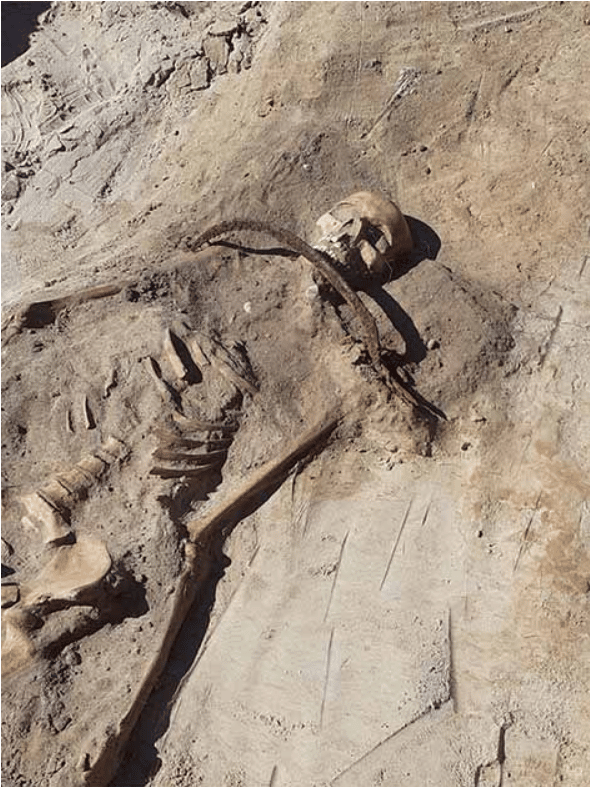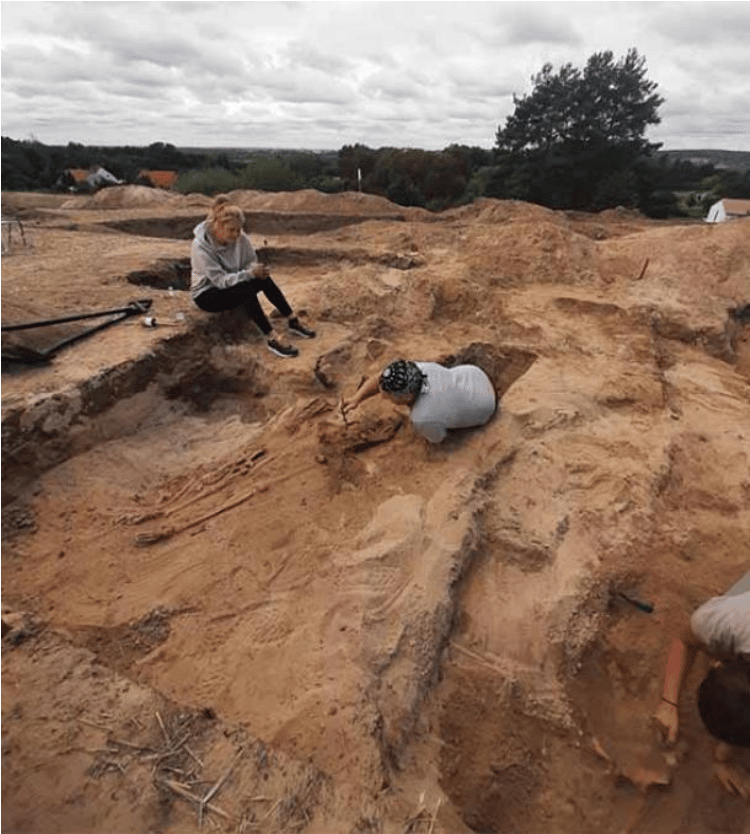A blood-curdling discovery in the south of Poland: archaeologists found the remains of a ‘female vampire’. During excavation works at a 17th-century cemetery in the village of Pień, researchers discovered a skeleton with a sickle across her neck to prevent her from rising from the dead. The discovery sheds a light on a period in European history where some people were affected by ‘vampire-hysteria’.
Team leader Professor Dariusz Poliński, from the Nicholas Copernicus University, told a correspondent from the Daily Mail the form of burial was unusual: “Ways to protect against the return of the dead include cutting off the head or legs, placing the deceased face down to bite into the ground, burning them, and smashing them with a stone.”
“The sickle was not laid flat but placed on the neck in such a way that if the deceased had tried to get up most likely the head would have been cut off or injured.” He added that the padlocked big toe on the skeleton’s left foot likely symbolised “the closing of a stage and the impossibility of returning.”
Mass hysteria

Between the 16th and 18th century, people in Europe feared that the dead would claw their way out of the grave as blood-sucking monsters. This ‘vampire-hysteria’ even led to executions of people thought to be vampires. People who died in untimely ways – such as through suicide – were often suspected of vampirism, and their bodies were maimed to prevent them from rising from the dead.
The panic began with an outbreak of alleged vampire attacks in East Prussia in 1721 and in the Habsburg monarchy from 1725 to 1734, which spread to other localities. Two famous vampire cases, which were the first to be officially recorded, involved two men from Serbia. After their deads, many people in the area died because of blood loss, including the son of one of the deceased.
Theses cases became famous because of the direct involvement of the authorities and the official documentation by physicians and officers, who confirmed the reality of vampires. Nowadays, scholars believe the physians poor knowledge and understanding of corpse decomposition lead them to the conclusion that vampires might be real. Nonetheless, it caused a mass vampire hysteria in Europe for decades.
Who’s protection?
While the discovery at Pień can be called unusual at least, hundreds of vampire burials have been discovered throughout Eastern Europe. In 2015, archaeologists digging in the Polish village of Drawsko found five skeletons that had been pinned to the ground in a similar or identical manner, Ancient Origins reported at the time.

Four of those skeletons – two women in their thirties, a man in his thirties or forties, and an adolescent girl – were buried with sickles tightly docked across their throats, like the woman at Pień. An older woman, who was 50 to 60 years old when she died, was buried with a sickle laying across her hips, and a medium sized stone at her throat.
The researchers who made the discovery at the time said that these measures may also have served to protect the dead from evil forces. According to folk wisdom, a sickle could protect women in labour, children and the dead against evil spirits. It also had a role in rituals designed to counter black magic and witchcraft, researchers said.
Elite area
Apart from the unusual security measures, the archaeologists found that the woman was buried with a lot of respect. She was wearing a cap made of silk, which would have been expensive and difficult to acquire in the 17th century. This implies she was regarded as someone with high social status within the community.
It seems the area in general was reserved for the burials of elite individuals. Earlier excavations near Pień revealed medieval graves that contained valuable items, such as silver jewellery, silk clothing, a precious necklace, and even a bronze bowl.
For now, the alledged vampire has left her tomb, but not to seek a victim or scare the locals. She has been transported to Nicholas Copernicus University in Torun, where archaeologists will carry out further research.
Sources: Ancient Origins, Daily Mail

